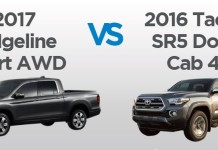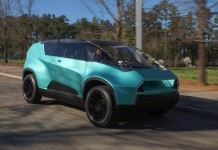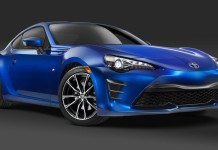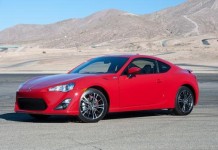Few SUVs have the sort of name recognition that the Toyota 4Runner enjoys. Launched in 1984, the 4Runner was (and has always been) Toyota’s SUV complement to the Land Cruiser. Even though the introductory model was little more than Toyota’s compact two-door pickup with a removable top, it was rugged and tough. And over time, the 4Runner has earned its own reputation as a durable vehicle — off-road and on.
During the SUV-crazy ’90s, Toyota introduced more models into its product lineup. This allowed the company to move the 4Runner upscale in size, accoutrements and price. Still built using body-on-frame construction, however, the current Toyota 4Runner maintains the classic’s brawn, which helps to set it apart from the other midsize SUVs in its class, especially those that have moved into crossover territory.
For some buyers, this traditional SUV style might be a detriment particularly with the third-generation model. Overall, though, it should be a good choice, new or used, for consumers in need of a dependable SUV that’s comfortable for everyday use while still being rugged enough for recreational duty.
Current Toyota 4Runner
The current midsize Toyota 4Runner SUV, introduced for 2003, represents the vehicle’s fourth generation. It comes in three trim levels: SR5, Sport Edition and Limited. Each trim is available with two engine options. A base 4.0-liter V6 engine puts out 236 horsepower and 266 pound-feet of torque. A more powerful 4.7-liter V8 makes 260 hp and a healthy 306 lb-ft of torque. A five-speed automatic transmission and rear-wheel drive is standard across all trims, and four-wheel drive is optional.
The Sport Edition comes with the expected roof rack, side steps and foglights, but it is much more than an appearance package. There are bigger front brakes, 17-inch alloy wheels and Toyota’s X-REAS suspension system, which reduces body roll in turns. The Limited is the top-of-the-line model, adding the usual premium features, such as leather seating, dual climate control and a CD changer. All trims get the latest electronic gadgetry. Downhill Assist Control automatically modulates the brakes and throttle to maintain smooth descents. Hill-start Assist Control helps prevent the SUV from rolling backward.
In road tests and reviews, we found the Toyota 4Runner to be surprisingly light and responsive for a truck-based SUV. It feels spirited and taut. There is minimal body lean on even the twistiest of roads. Both engines provide a good amount of hustle, and for general use most buyers should be happy with the more fuel-efficient V6. For those planning on frequent towing, the V8 is likely the better choice. Off-road, the 4Runner shines.
Shopping for a used model from the fourth generation should be straightforward, as Toyota has made only minor changes since the 2003 launch. The V8 option in earlier models (2003-’04) came with considerably less horsepower (235), while making 320 lb-ft of torque. Those early V6 models also came with a four-speed automatic transmission, as opposed to the five-speed automatic that’s currently available.
Downsides to the 4Runner are few. The most significant concern is that it provides less cargo space than most of its midsize competitors. Models with the optional third-row seat are further hampered, as the third row doesn’t fold completely flat and provides a very limited amount of legroom.
Past Toyota 4Runner models
For as good as the current Toyota 4Runner is, you might be surprised to learn that the previous model was considered to be a little disappointing. Sold from 1996-2002, the third-generation 4Runner came in three trims — base, SR5 and Limited. It looked great, but had a hefty price tag. (Depreciation has neutralized some of the price premium, however, and the 4Runner still holds its value quite well, which is advantageous when it comes time to sell.)
As more carlike SUVs entered the market, the 4Runner grew old quickly, and it didn’t take long for the 4Runner’s weaknesses to show. Two engines were available, a 150-hp 2.7-liter inline-4 and a 183-hp 3.4-liter V6 engine. Neither was particularly strong for the time. Some of our editors also thought that the body was too narrow, making the cabin feel tight and claustrophobic. Even the stereo was difficult to navigate. Still, this model impressed with its off-road prowess and typically high Toyota build quality.
Prior to the third generation, the Toyota 4Runner was more rugged than urban, but it was a great value. The second-generation 4Runner, sold from 1990-’95, came in two trim levels: SR5 and SR5 V6. The SR5 was powered by a 116-hp 2.4-liter four-cylinder. The SR5 V6 came with a 150-hp 3.0-liter V6. Most models sold were four-doors, though two-door models were also offered.
| SR5 | Sport Edition | Limited | |
| 4.0-liter DOHC 24-valve EFI VVT-i V6 236 hp @ 5200 rpm/266 lb.-ft. @ 4000 rpm | Standard | Standard | Standard |
| 4.7-liter DOHC 32-valve EFI VVT-i V8 260 hp @ 5400 rpm/306 lb.-ft. @ 3400 rpm | Available | Available | Available |
| Ignition | Electronic, with Toyota Direct Ignition (TDI) | ||
| Transmission V6 and V8 models | 5-speed electronically controlled automatic overdrive (ECT) | ||
| Body construction | Reinforced body-on-frame construction | ||
| Drivetrain 2WD V6 and V8 4WD V6 4WD V8 | Front engine, rear-wheel driveMulti-Mode 4-wheel drive with Torsen® limited-slip center differential with locking feature Full-time 4-wheel drive with Torsen® limited-slip center differential with locking feature | ||
| Suspension | Independent double-wishbone front suspension with stabilizer bar; 4-link rear suspension with coil springs and stabilizer bar | ||
| Steering | Variable-gear rack-and-pinion | ||
| Turning circle diameter, curb to curb (ft.) | 37.4 | ||
| Brakes | Power-assisted 4-wheel ventilated disc brakes with 4-wheel Anti-lock Brake System (ABS), Electronic Brake-force Distribution (EBD) and Brake Assist | ||
| Vehicle Stability Control (VSC) + Traction Control | Standard | Standard | Standard |
| Downhill Assist Control (DAC) (4WD models) | Standard | Standard | Standard |
| Hill Start Assist Control (HAC) | Standard | Standard | Standard |







